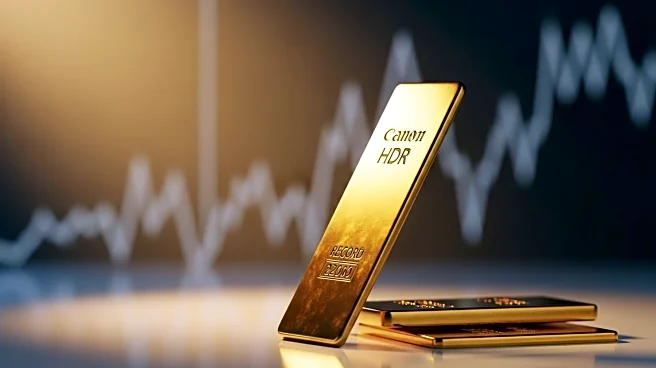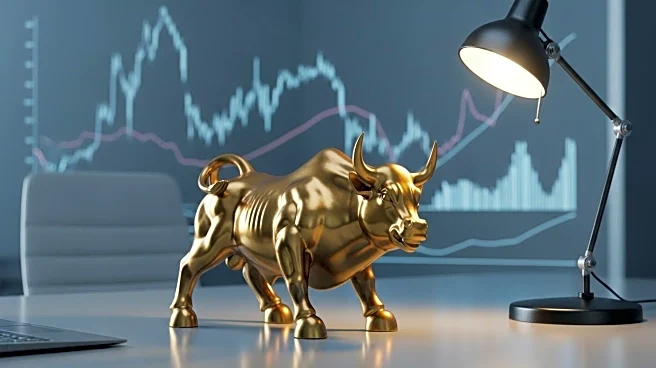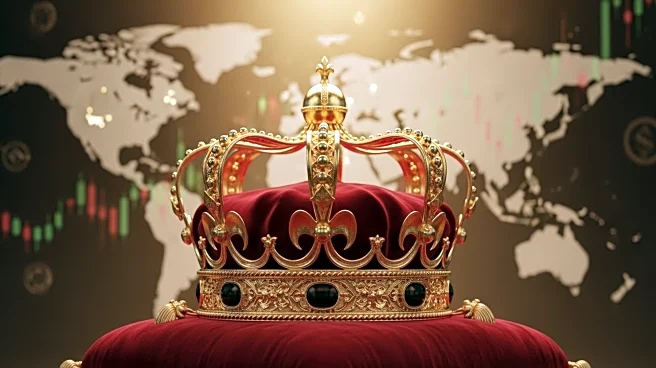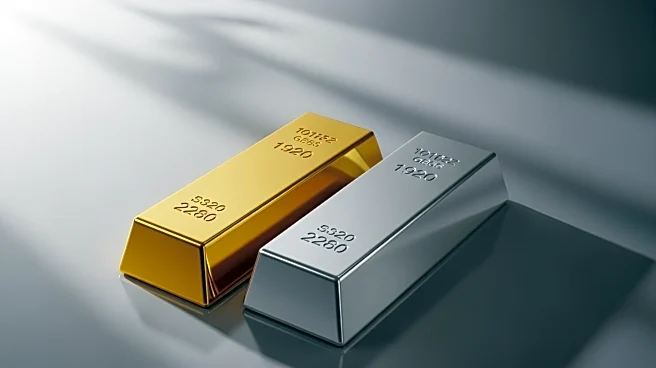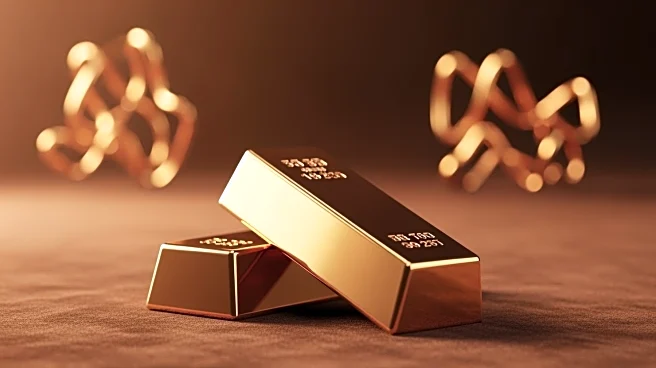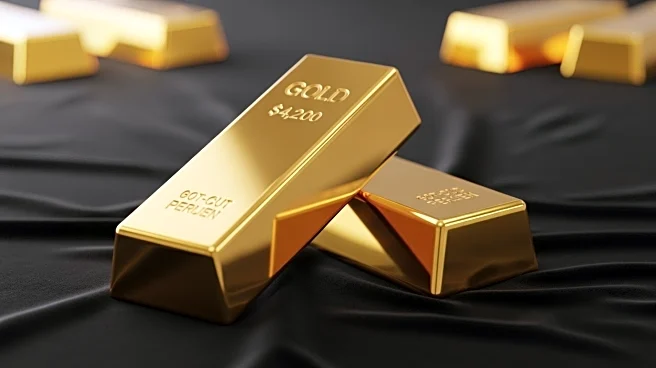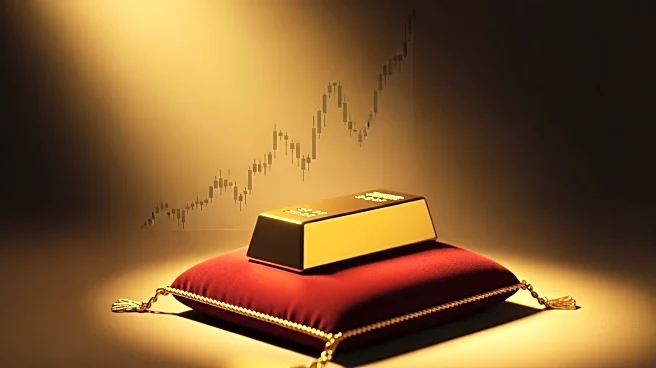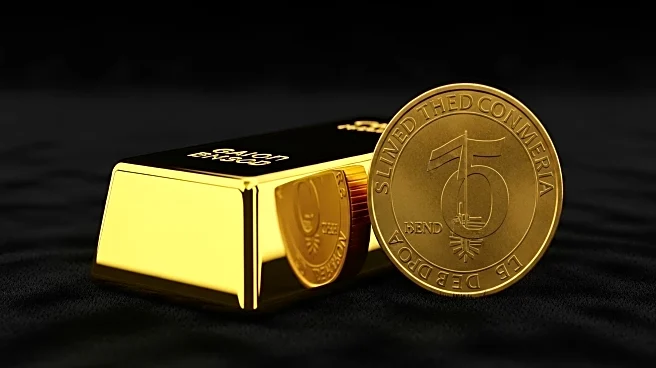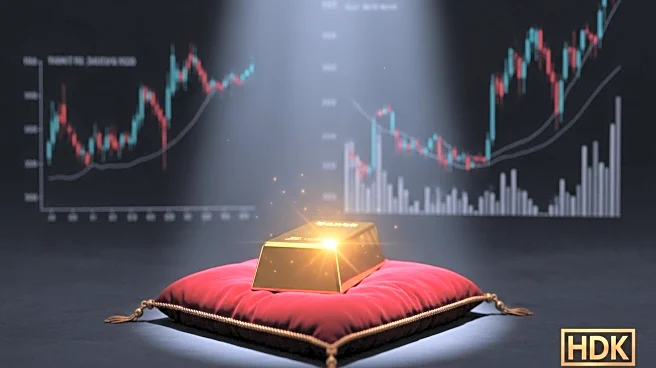What's Happening?
Gold prices have reached a new high, surpassing $4,300 per ounce, marking the best week for the precious metal in five years. This surge is attributed to ongoing economic uncertainties, including weaknesses in U.S. regional banks, global trade frictions,
and expectations of further interest rate cuts. The imposition of tariffs by President Trump has contributed to these economic pressures, leading investors to seek refuge in gold as a safe-haven asset. Despite a temporary pullback due to a stronger dollar and President Trump's remarks on the unsustainability of full-scale tariffs on China, gold remains on track for significant weekly gains.
Why It's Important?
The rise in gold prices reflects broader economic concerns, particularly the impact of trade tensions between the U.S. and China. As tariffs increase costs for businesses and consumers, the economic outlook becomes more uncertain, prompting investors to turn to gold. This trend highlights the vulnerability of the U.S. economy to geopolitical tensions and trade policies. The situation also underscores the potential for further interest rate cuts by the Federal Reserve, which could influence investment strategies and economic growth. Stakeholders in the financial markets, including investors and policymakers, are closely monitoring these developments.
What's Next?
Looking ahead, the market anticipates further discussions between President Trump and Chinese leaders, which could influence trade policies and economic conditions. Additionally, the Federal Reserve's upcoming meetings may result in further interest rate cuts, impacting the financial markets and gold prices. Investors and analysts will continue to assess the geopolitical landscape and its effects on the economy, with potential implications for future trade agreements and economic stability.
Beyond the Headlines
The current economic climate and rising gold prices may lead to long-term shifts in investment strategies, with increased interest in safe-haven assets. This trend could also prompt discussions on the sustainability of current trade policies and their impact on global economic relations. As geopolitical tensions persist, the role of gold as a hedge against uncertainty may become more pronounced, influencing both individual and institutional investment decisions.


